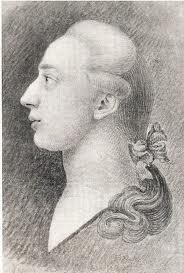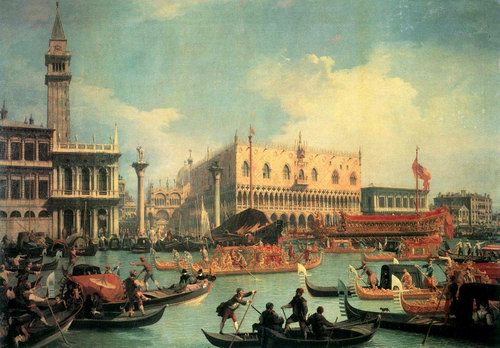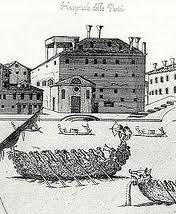Venezia
The Veneti
A group of Italians from northern Italy, the Veneti, refused to be governed by the Lombards who were occupying their territories. Around the 6th century they settled in a lagoon off the Adriatic Sea.
Both the Hungarians and the Saracens tried to occupy the the new republic but the Doge wisely signed a commercial treaty with the Saracens that increased trade with the Muslim world. The height of the city’s prosperity came with the 4th Crusade in 1202, which Venice financed for the monopoly of trade with Jerusalem.
In the 13th century the city was controlled by aristocrats who established Venice's commercial supremancy after they defeated Genova, their rival. The city's economic decline came after the Ottoman Turks’ invasion of Constantinople in 1453 which caused the closure of the trade route to the Middle East, and the search for an alternate route to the Indies. The new batch of aristocrats was decadent and not able to face the problem.
Soon after Bartolomeu Dias and Vasco de Gamma circled the Cape of Good Hope around 1500, Pope Julius II, the Holy Roman Emperor King Maximilian I of Germany, King Louis XII of France, and King Ferdinand II of Aragon united as the "League of Cambrai", and took over Venice’s territories. The city was occupied by Napoleon in 1797, and was integrated into the new Kingdom of Italy in 1866.
Artists of the Venetian Renaissance from the 15th to the 17th century:
Bellini, Giorgione, Palma Vecchio, Tiziano, Palladio, Tintoretto, Veronese, Tiepolo and Canaletto*

Canaletto
The community founded colonies on the twelve principle islands and became the "Republic of Venice" with a Doge (from Latin dux: leader) elected into office. By the 9th century the city had rebuffed the Muslims, expanded its boarders and controlled trade over the Adriatic. The bones of Saint Mark were smuggled from Alexandria and buried in a new basilica that they named in his honor as patron saint of Venice. Saint Mark’s Basilica was damaged by fire in 976 and rebuilt in the Byzantine style.
Casanova, legendary Venetian lover, lived in the 18th century. His actor parents put him a convent for priesthood but he was expelled for misconduct. Instead he became a soldier, a gambler, an alchemist, a lottery manager, a violinist and a spy.
He was imprisoned for practicing magic and made a spectacular escape a year later. He was a con artist which made him, like Don Juan, irresistible to women because he was exciting. However, unlike legendary Don Juan who was arrogant, Casanova's pleasent personality overpowered his failures and he lived a long fruitful life. He stayed for a while in the court of King Louis XV until he retired to a friend’s castle to write his memoirs - in twelve volumes.
The dramatist Carlo Goldoni, born in Venice in 1707, started his writing career after his degree in law from the Univeristy of Padova. His first works were tragedies, the style in vogue at the time but his later plays were comedies written in Venetian, inspired by Moliere’s interpretation of commedia dell’arte. Goldoni left Venice for Paris in 1761 and wrote a play for the marriage of King Louis XVI and Marie Antoinette. His royal pension was revoked after the French Revolution and he died in poverty.


The composer and musician Antonio Vivaldi was born in Venice in 1678 and was buried in 1741 in an unmarked grave in Vienna. He was ordained a priest but his fragile health kept him from holding mass. Instead he taught music at a girl’s orphanage, l’Ospedale della Pieta, using his own compositions. The girls were so good they held concertos for the Venetian artistocracy.
At the height of his career Vivaldi composed for kings and nobles around Europe but his work was all but forgotten until some volumes were discovered in Piedmont in 1926, in a Catholic boarding school. The fathers wanted to sell them and turned them over Dr. Alberto Gentili at the National Library in Turin to assess their value. Gentili saw the importance of keeping the work intact, out of reach from both dealers and the government. He later noticed many of the compositions had no ending and deducted there had to be more volumes. He had to find the money to buy the first batch and at the same time hunt down Vivaldi’s family, all this in secret. He found the remaining volumes in the hands of Count Giacomo Durazzo of Genova, Austrian Ambassador to Venice, not an easy person but in the end an agreement was reached to sell them to the Turin Library.
Once Gentili found the money from a private donor for the first collection he had to go find another donor for the remaining works, which he did. Both times by men who had lost infant sons, and the donations were in their memory. With the works assembled a Vivaldi Week was organized in Siena in 1939, which resulted in the revival of his music one hundred ninety eight years after his death.

The Lombards
Ruled a slice of Italy from 568 to 774 and called it Regnum Italicum, Kingdom of Italy.
Following the victory over the Gepids in 567 Lombard king Audoin, joined by other tribes, easily invaded northern Italy, barely recovering from the Gothic War that lasted nineteen years. In 774, the Kingdom was taken by Frankish King Charlemagne. Lombard nobles still held regions in Italy up to the 11th century, when the Normans seized their land.
The Lombards
Ruled a slice of Latium from 568 to 774 and called it Regnum Italicum, Kingdom of Italy.
Following the victory over the Gepids, Lombard king Audoin, joined by other tribes, easily invaded northern Italy barely recovering from the Gothic War that lasted nineteen years. In 774, the Kingdom was taken by Frankish king Charlemagne of Germany. Some Lombard nobles still controlled regions up to the 11th century when the Normans seized their land.